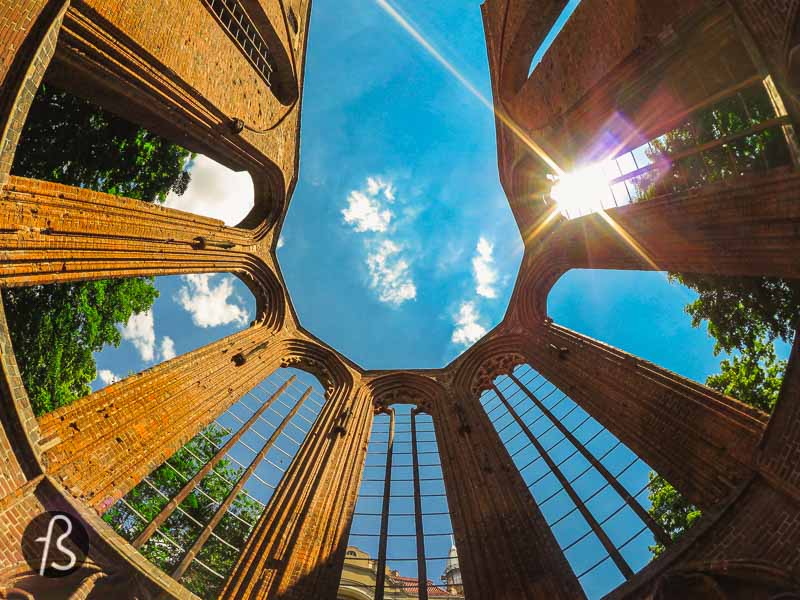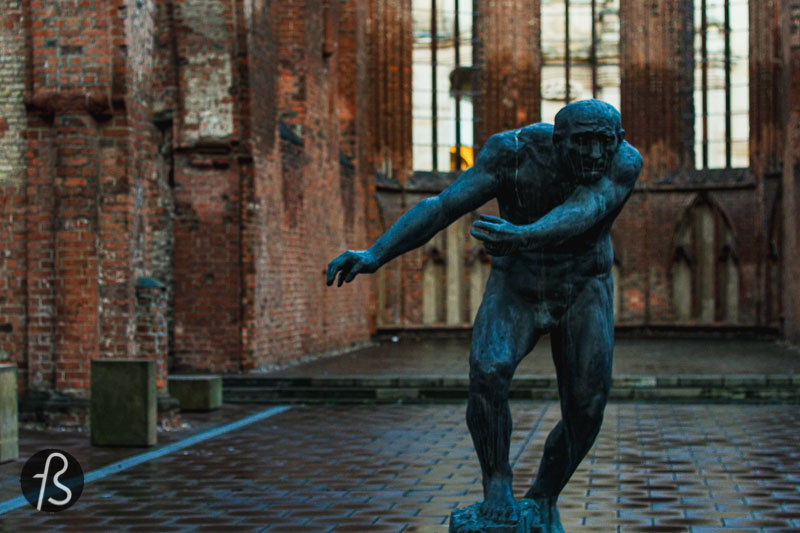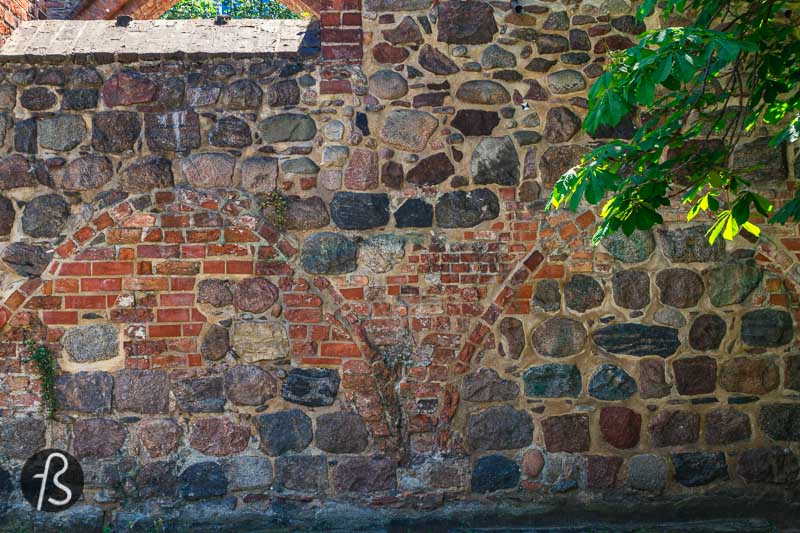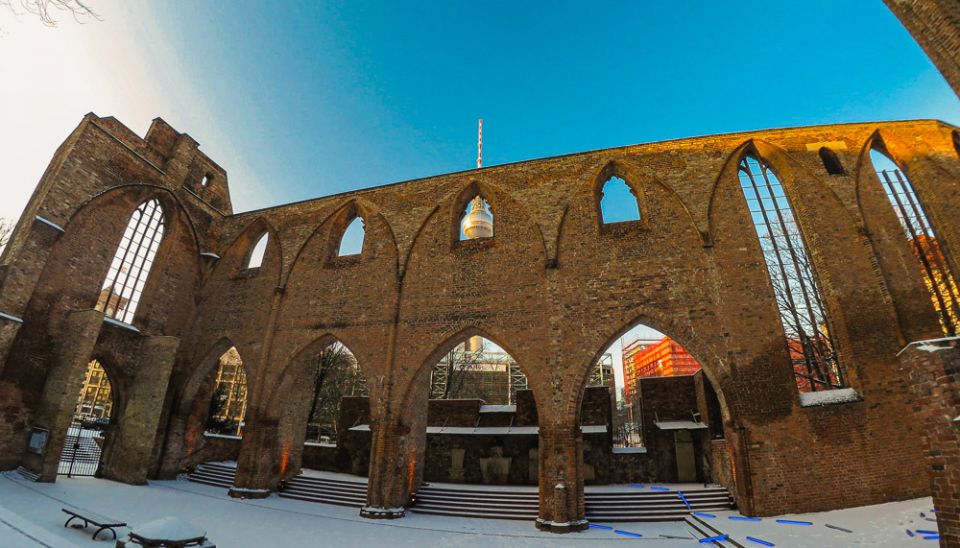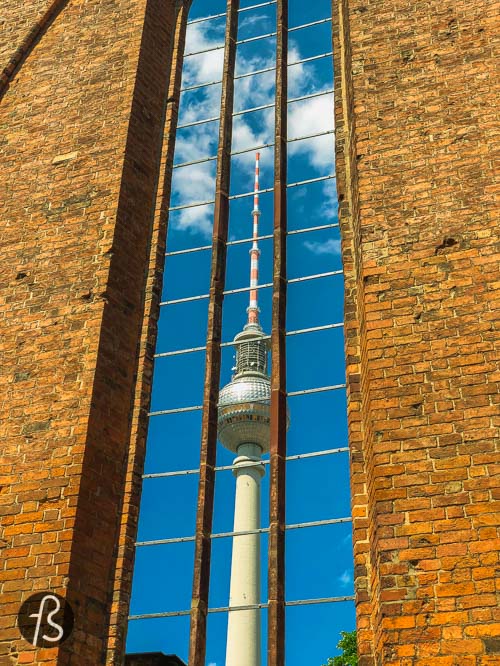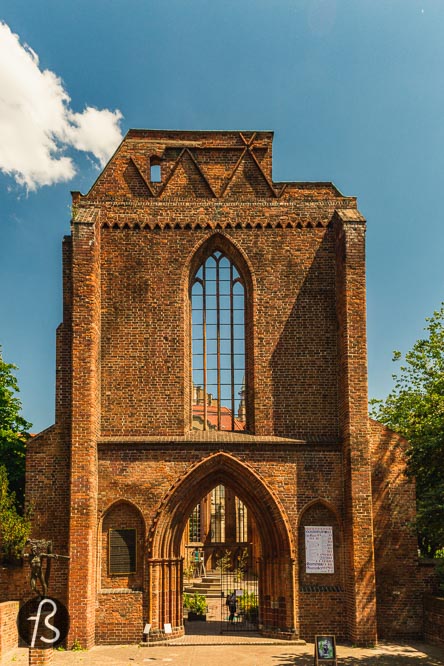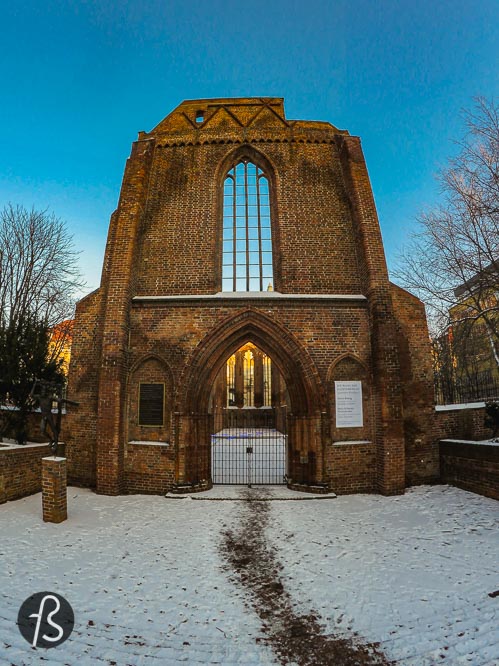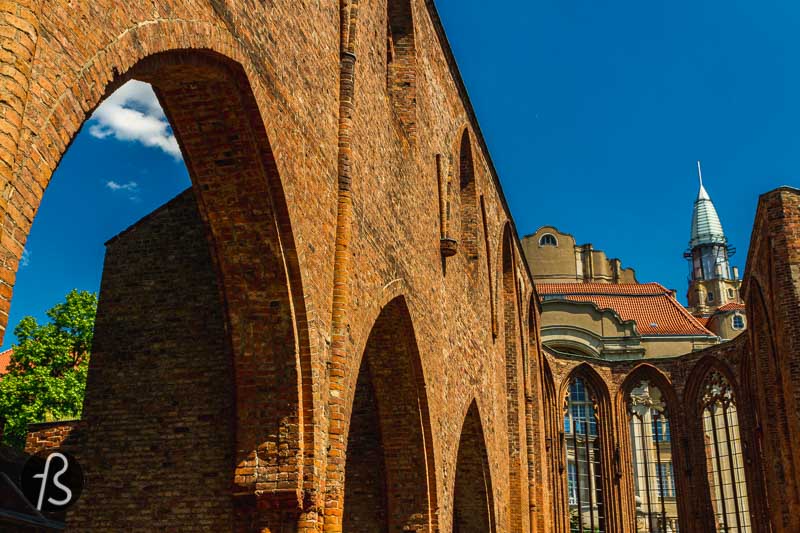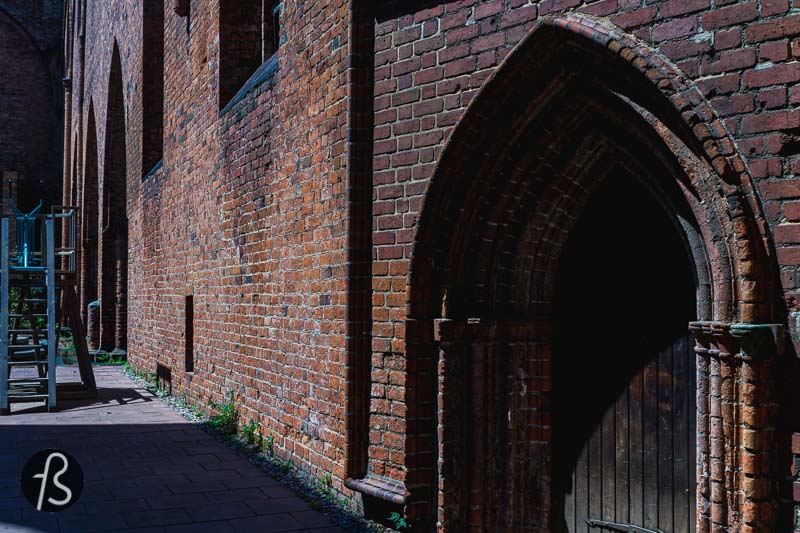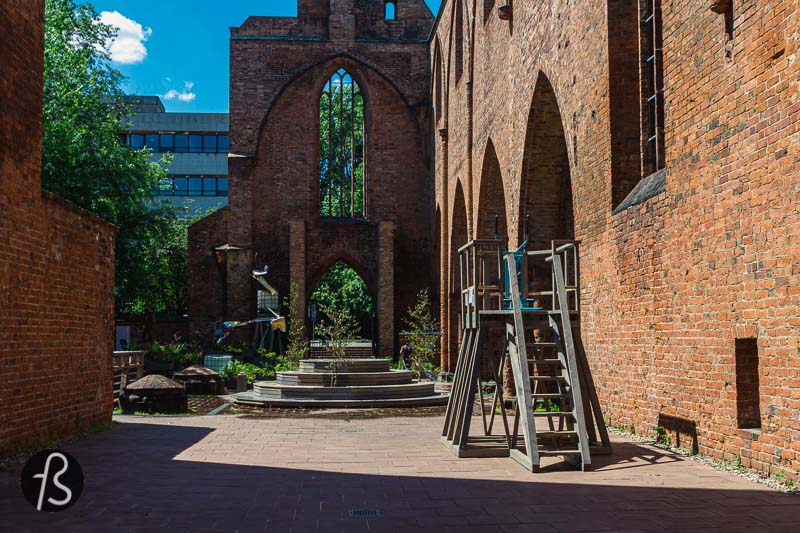If you ever walked around Alexanderplatz, Altes Stadthaus, and the Alexa shopping mall, you have seen the ruins of a church. That is the Franziskaner-Klosterkirche, founded in 1250 and destroyed by Allied bombing in April 1945, in the last days of the Second World War.
We passed this place by bike a few dozen times before we decided to stop exploring these ruins so close to the center of Berlin. After this first exploratory trip, we have been back there a few times. In some of those, we brought some friends to see one of the most impressive medieval ruins in Berlin.
A bit of the history behind the Franziskaner-Klosterkirche
The ruins that you can see next to Alexanderplatz are the irrefutable evidence of a medieval monastery culture that disappeared from Berlin. The Franziskaner-Klosterkirche also has architectural value. It’s one of the first buildings in town made entirely of brick, marking the beginning of the regional development known as brick Gothic.
The Franziskaner-Klosterkirche history began at the end of the thirteenth century when the Franciscan order received a piece of land from the Margrave of Brandenburg. The church and monastery construction start in 1290 after a brick donation from a brick bakery owned by Knight Jacob of Nybede near Tempelhof. Something interesting about this donation is that it’s the oldest surviving record mentioning Kreuzberg.
During its first year, the church changed shape, and the ruins that we can see today are from the first half of the fourteenth century. In 1365 Louis II, the Elector of Brandenburg was buried there.
With the Protestant Reform, the monastery was dissolved, but the monks were granted a lifelong residency of the complex. When the last Franciscan monk died in 1571, Brother Peter, the building changed used, and it turned into the first Berlin print shop able to produce documents in different languages.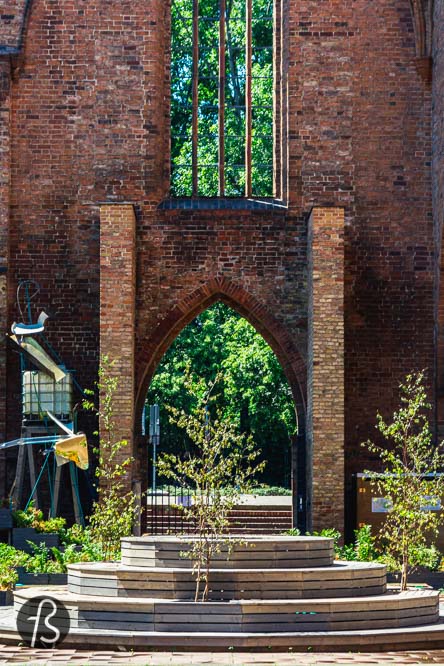
At the beginning of the nineteenth century, the building was in terrible shape, and Karl Friedrich Schinkel and Christian Gottlieb Cantian, who also created the great granite bowl in Berlin’s Lustgarten, put together plans to renovate the building. In the following decades, some renovation was done to the building, and parts of the building were converted into an auditorium and an observatory.
In 1902, the church closed down due to moisture damage, and it was only open again in 1936. It didn’t last long since the church was destroyed on 3 April 1945, in the last weeks of the Second World War. After the war, the then 13-year-old Peter Rohrlach managed to save more than six thousand books from the school library ruins.
In the 1950s, the surrounding church walls were secured, some debris was removed, and parts of the monastery complex were torn down for expansions of the roads and streets around the church.
The Franziskaner-Klosterkirche started being used for cultural events in 1982 when East-Berlin sculptors started to self-organized exhibitions in the ruins of the church. From 1992 onwards, the Förderverein Klosterruine e. V. Took care of the organization and, by 2016, the responsibility was transferred to the Berlin District Office. Today, events are happening in the church, and it’s always interesting to pass by and see what beautiful objects can be seen in there.
For us, the Franziskaner-Klosterkirche is one of the last surviving testimonies of the old Berlin. It’s a piece of history that the city has that much anymore. It’s one of the most unique parts of architectural history open to the public and even used for cultural purposes. The fact that a ruined church like this, filled with history, isn’t more known in the city is truly a pity, and we hope that we can spread the word about it to more people since it deserves more attention for sure.
The Franziskaner-Klosterkirche is open from April to October, Monday to Sunday, from 10:00 to 18:00. But the ruins are closed to the public during the winter months from November to March. However, the exhibitions can be viewed from outside the church, as you could see in some of the pictures we have here.
As you can see from some of the pictures here, this church is one of our favorite photo spots to document the TV Tower. From here you can play around with the church ruins and frame it in creative ways. Try it out.
Also, if you are interested in Berlin’s medieval past, you might enjoy reading what we wrote about the Old City Wall of Berlin.
Franziskaner-Klosterkirche: A Visit to the Ruined Church next to Alexanderplatz
Klosterstraße 73a, 10179
Berlin-Mitte
